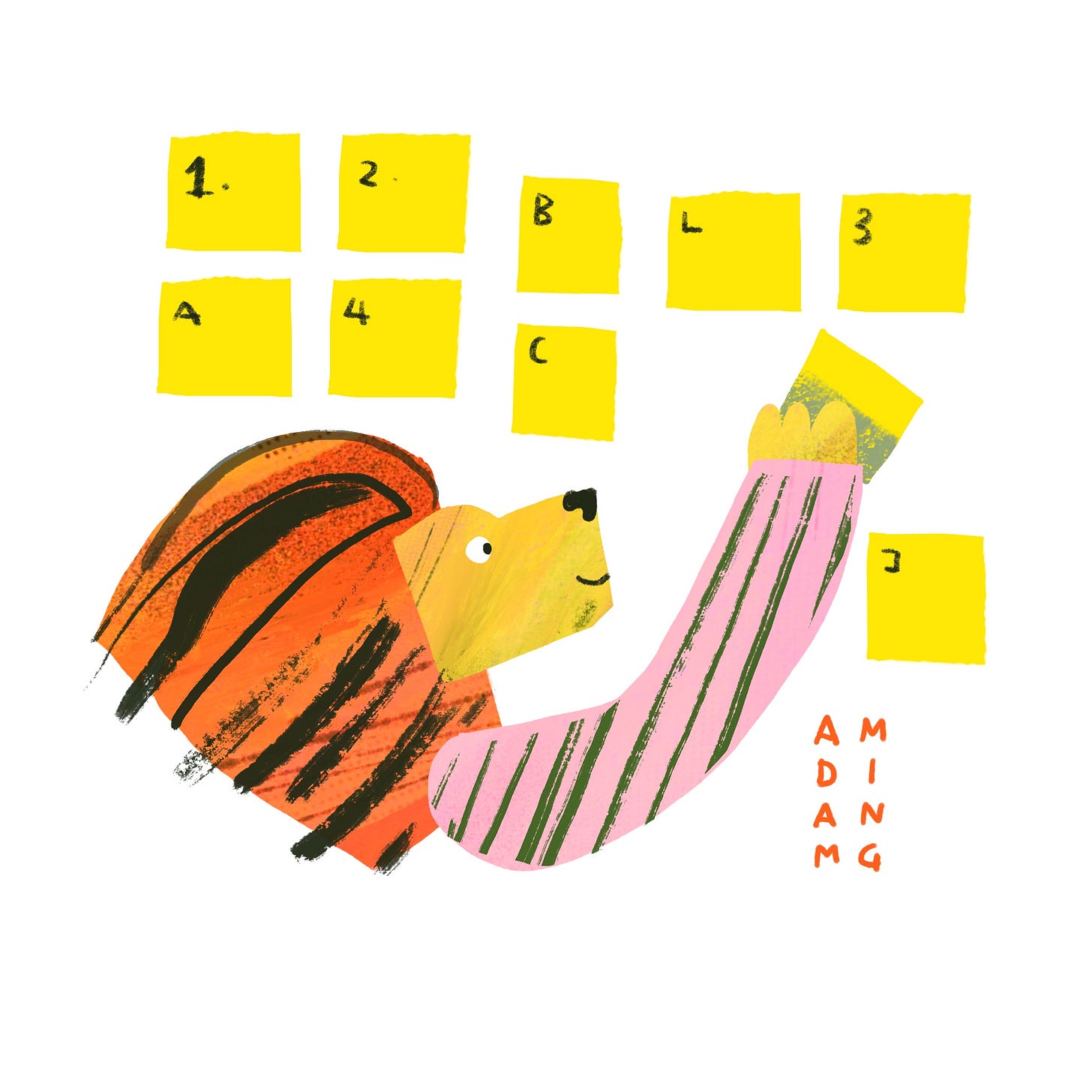When I worked at the startup, we would spend half a day planning, every two weeks. The whole group was involved breaking down work into doable chunks, and arranging them in sequence agreeing what to do, and what not to do. In the beginning some team members would argue that we were wasting time planning rather than working. But after doing the process for a few cycles (or sprints) we all learned that the planning was the work, we were just doing a lot of it up front.
I applied this to a recent illustration sprint. I had the task of completing roughs for a picture book, instead of jumping into it a page at a time and figuring things out as I went, I divided the job into mini projects.
Grouping work meaningfully
Sometimes that would mean a page. Because it required specific work that no other page required.
Some times that would mean 4 pages. (Or two spreads) Because there was a continuity and similarity in the work even though one spread appeared towards the beginning of the book and the other spread appeared towards the end.
Mini Project Plans
Once I figured out the mini-projects, I would make a plan for each project.
One example of a plan:
Consider how the text will fit with the layout.
Draw three poses: Wolf as granny, Wolf Sneaking, Wolf blowing houses down
References to use: ‘classic fairy tales, prep work from sketchbook (enchanted apple)”
Steps: Get reference, Design Layout, Draw Poses
Another plan might be:
Research objects for the room
Sketch a page or two of potential objects
Research ‘green goblin’ flying poses
Draw poses
Pull them together in a composition
Each mini project has subtle differences and specifics. I think of these all in the planning session which took 5 hours. Thinking about exactly how I would approach each mini-project.
Then I sequenced them, So I wasn’t doing page one followed by page two.
I started with the easiest to build momentum, then I put a really difficult one before a fun one. Sometimes working on one spread made another spread easier, and I ordered things this way.
Working the plan
Then I got to work, which meant doing the 60 or so little bullet points as I had planned them, there was no wasted work, or aimless ‘research’, no browsing for inspiration unless that was a specific task, and when I caught myself wondering, I just pulled myself back to the next task.
Only once, in the whole projects did I deviate from the plan because ‘inspiration struck’
Had I not made the plan, there would have been many times where I would have gotten stuck and been ‘too tired to think’, and that would end a precious work session or lead to distraction, rather than allow me to make progress at the end of long days, by just doing one more task or one more mini project.
Specific knowledge
I’ve developed the skill of planning creative work over 10 years working and leading creative teams. I’ve tried different tools and systems and methods. And while everything I’m doing might sound straightforward there are little nuances that take time, effort, and experience to get right.
Quest
Ponder this question.
What specific knowledge to you bring from your experience into your creative practice?






THANK YOU for this post!! The timing of this post couldn't be more perfect. I am about to start a big project and had it mapped out in a very conventional (linear) way, but this has me re-thinking it. I'm going to look at the project again and try grouping things that are connected (but might not be typically worked on at the same time). This has really given me a lot to think about and I'm grateful for your expertise on planning.
This was incredibly helpful. I'm going to try it working on Winter Camp - I feel often stuck but I think having a plan like this would solve most of those moments. Thank you for sharing this concept and concrete examples, which helped me really see the possibilities!